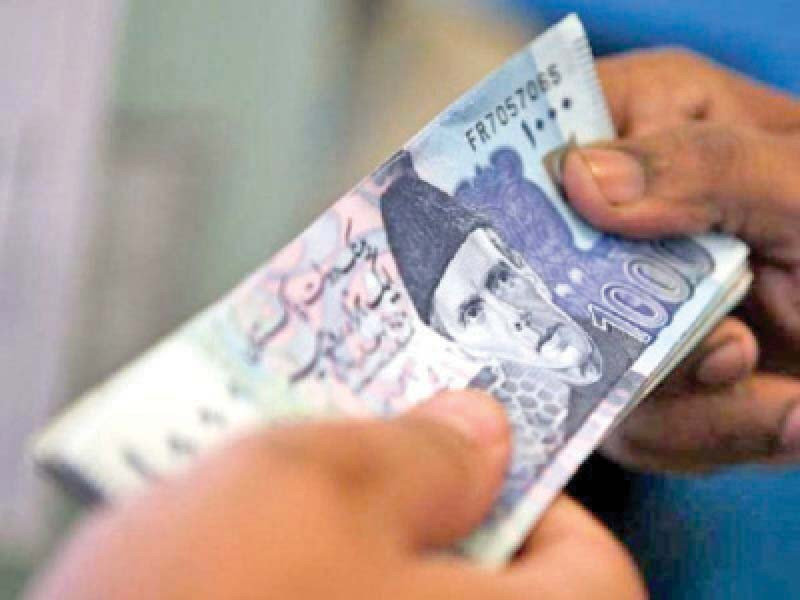
The government, private sector and households have deposited excess cash in banks, making huge low-cost liquidity available to financial institutions in Pakistan.
Banks have, however, remained reluctant to offer the funds to businesses and instead have made safe lending to the government.
Deposits with banks grew 18% over the past one year to Rs19.21 trillion in August 2021 compared to Rs16.33 trillion in the same month of last year, Pakistan’s central bank reported on Wednesday.
Banks have largely invested the available funds in the government debt securities like Pakistan Investment Bonds (PIBs) and T-bills, which is a way to make safe lending to the government.
Accordingly, banks’ investment (lending to the government) soared 28% over the year to Rs13.90 trillion in August 2021 compared to Rs10.87 trillion in August 2020.
On the other hand, banks’ advances (credit) to the private sector also improved over the year but not at the pace at which its lending to the government did.
Credit off-take (advances) increased 11% to Rs8.94 trillion in the month under review compared to Rs8.05 trillion in the corresponding month, according to the State Bank of Pakistan (SBP).
ADR (advance to deposit) ratio dropped 280 basis points to 47% in August 2021 compared to August 2020 and dropped 60 basis points compared to the previous month of July 2021, Arif Habib Limited (AHL Research) calculated.
IDR (investment to deposit) ratio increased 581 basis points to 72% in August 2021 compared to the same month last year, but dropped 248 basis points compared to July 2021, it added.
The higher growth in investment to deposit ratio compared to the one in advance to deposit ratio suggests banks in Pakistan have maintained their typical business model of largely making safe lending to the government and lesser to the private sector.
The banks’ business model is in contrast to the government’s pro-business and economic growth policies.
“Banks were reluctant to advance (credit to private sector),” AHL Research Economist Sana Tawfik said the other day.
Banks, however, may no longer continue to practice the existing business model considering the government would charge additional tax of 5% on banks whose advance to deposit ratio would remain below 40% and 2.5% between 40-50% with effect from July 1, she said.
To avoid the additional taxation, banks would improve their working relationship with businesses to maintain advance to deposit ratio over 50% going forward.
The advance to deposit ratio would also grow during FY22 considering businesses would borrow between Rs250-275 billion approved under the subsidised financing for setting up new factories and expansion of existing one under the temporary economic refinance scheme (TERF).
She said banks’ deposits have maintained strong uptrend for quite a long time amid increased inflow of foreign currencies on account of workers’ remittances sent home by overseas Pakistanis and increased circulation of money in the system.
“The workers’ remittances have remained strong over $2 billion a month for the past 14 consecutive months,” she said.
On the other hand, the government has continued to increase borrowing from commercial banks since July 1 2019 to finance budget deficit. The government has increased its reliance on commercial borrowing since the International Monetary Fund (IMF) under its $6 billion loan programme barred it to borrow from the central bank to overcome budget deficit.
IMF conditioned ceasing budget financing from the central bank to put brakes on accelerating inflation. However, inflation reading has yet remained high amid other factors like uptrend in international energy and food prices.
The growth in deposits was also a result of increased economic activities as depicted by increased money supply in the country. The government has set economic growth target at 4.8% for FY22 compared to 4% in FY21. It contrasted 0.5% in FY20.
The government has continued to borrow more from banks to finance public sector development projects worth around Rs900 billion in FY22 compared to low collection of revenues in taxes than the one required during the year.
Published in The Express Tribune, September 9th, 2021.
Like Business on Facebook, follow @TribuneBiz on Twitter to stay informed and join in the conversation.






1726140338-01730723472-0/Untitled-design-(42)1726140338-01730723472-0-270x192.webp)
1730702478-0/Copy-of-Untitled-(1)1730702478-0-270x192.webp)





1730706072-0/Copy-of-Untitled-(2)1730706072-0-270x192.webp)


COMMENTS (2)
Comments are moderated and generally will be posted if they are on-topic and not abusive.
For more information, please see our Comments FAQ